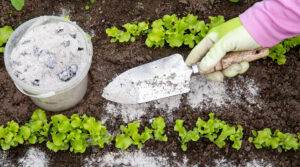Balcony gardening is a fantastic way to bring nature into your apartment and utilize your outdoor space. When planning your balcony garden, the first step is to consider the size and characteristics of your space. The orientation of your balcony is crucial as you need to be aware of how much or little sunlight your small space receives. The key to a successful small garden is to utilize clever planting techniques and pick the correct crops.
5 Tips to Create a Successful Apartment Balcony Garden
Sunlight and UV Exposure
Your plants need lots of sunlight to thrive. Your garden needs suitable access to natural light however it is not essential that they receive direct sunlight. The more sunlight your balcony receives the better your garden will be.
If your balcony is south or west-facing you will have sunshine almost all day long. So growing should not be an issue. However, an east-facing balcony will only receive sunlight in the morning which limits what you can grow. However, leafy greens, herbs and root vegetables should be able to thrive in these conditions.
If you have a north-facing balcony, this is covered by shaded throughout the year. It can be difficult to grow vegetables in shaded environments however lettuces, green onions, bok choy and some herbs may be okay in these conditions.
Correct Plant Spacing
Crowded plants do not grow to their full potential and will not produce the bountiful harvest that you are looking for. This can be difficult when planting in a small space however with clever companion planting the space can be effectively utilized. Correct spacing is required to allow for additional gardening activities such as transplanting, irrigation and pruning.
Correct Watering Techniques
Container garden pots dry out faster than gardens in the ground. It is recommended to always water your plants once per day and in the summer months watering twice per day may be required. Always water your plants in either the morning or the evening. If you water your plants at the hottest part of the day, water will evaporate and less will actually soak into the soil.
It is important to consider what happens to the excess water that comes from watering? Does your balcony have a stormwater drain built in already? Does the excess water run over the edge and onto the balcony below? These are all important items to think about before starting your garden.
It is recommended to use drip irritation or mini drippers. These are water efficient ways for the water to be delivered directly to the plants at the same rate that it is absorbed by the plant and lost through evaporation. This means that there will be no opportunity for you to accidentally flood your balcony and annoy your neighbors.
The other option is to use self-watering pots and planters. This style has a water reservoir at the base that you can fill with water. The plant will slowly absorb the water and there will be no excess overflow.
Correct Pots and Containers
Some medium sized plants such as peppers, peas and cherry tomatoes can be grown in a three to five gallon container. Larger plants such as eggplants, cucumbers, zucchinis and large tomatoes require a pot between eight and ten gallons. If you don’t care about aesthetics then utilize whatever containers you can find for cheap. Make sure they always have a drainage hole or make one yourself.
However if you want your garden to look a certain way then it is recommended to buy pots that suit the style you are wanting. This could include terracotta, decorative barrels, coloured pots and vertical planters.
Being creative with your small space is crucial to a large harvest. Growing vertically and utilizing trellis is important. Try to grow your plants up where possible to create space at the soil level for additional plants. Hang pots from above to make room at lower levels. Look into railing pots, stackable planters and tiered plants stands to make the most of the room you have available.
Companion Planting
This style of planting is perfect for small spaces as it allows the vegetables to assist one another to grow in the most effective manner.
A few common pairings include:
- Plant spinach with onions and chard.
- Pair lettuce with herbs such as rosemary, thyme and basil.
- Plant beans with carrots, eggplants or squash
- Plant tomatoes with garlic, basil and onions.
Plants to avoid planting near one another, even in separate pots include:
- Keep carrots away from fennel or dill.
- Don’t plant tomatoes near potatoes or squash.
- Keep carrots away from garlic or onion.
- Don’t plant onions near peas or beans.
Best Plants to Grow in a Balcony Garden
Most plants can be grown in a small container garden space such as an apartment balcony. However it is important to first select plants that you will actually eat. There is no point growing something that you won’t enjoy consuming.
Recommended vegetables which are successful for beginner gardeners include:
Herbs
Commonly used herbs are a perfect way to start your apartment balcony garden. Shrubby herbs such as dwarf rosemary, thyme and sage are all fantastic options. Other suitable herbs include basil, mint, oregano, chives, dill, cilantro and parsley.
High Yield Vegetables
Vegetables that produce large quantities of produce quickly are always favorites to grow. These includes radishes, tomatoes, peppers, chillies, eggplants, beans and pe
Root Vegetables
Grow bags are recommended for root vegetables as they require more space than your typical herbs. You can grow carrots, potatoes, sweet potatoes, parsnips, radishes, and many others in containers.
Leafy Green Vegetables
Lettuces, arugula, spinach, and asian greens such as tatsoi and bok choy are all successful products of balcony gardens. Why not try cabbage, cauliflower, broccoli and broccolini as well?
Dwarf Fruit Trees
These smaller versions of traditional fruit trees are perfect for larger balconies. Miniature citrus trees are available and apples, pears and stone fruit can be grown in large pots or small tubs.
If you live in an apartment or townhouse growing your own produce is still an option for you. By being creative with your planters and containers a huge variety of crops can be grown in a small space. If you’re not sure how it will go, just give it a try. Gardening is full of lifelong lessons and everyone learns from simply making mistakes and learning from them.
Planning Your Balcony Garden Design
When designing your dream balcony garden, take a little bit of time to plan your new oasis. This will help you to be more successful and to maximize the space. Here are five steps that we recommend that all balcony gardeners utilize.
Review your Space
Soil and water are very heavy so carefully reviewing your balcony space is crucial. Analyze what floor and drainage is available on your balcony. Figure out how to not damage your balcony from the pots and excess water. If your balcony has walls, can shelves or rail planters be utilized to conserve space? Are you renting or do you own your space? All of these questions are important to know before you start designing your dream balcony garden.
Observe the space and see where the sun lands during the day. Review where the rain falls and how it drains away. Is there often wind coming through in one direction that you need to be aware of?
Prepare a Budget
All gardeners will know that it is very easy to go crazy and spend too much money at the nursery when establishing your garden. Set a realistic budget for how much you want to spend on your garden in total. Shop secondhand for pots and planters. This will save you a lot of money and reduce items from ending up in landfills.
For the plants themselves, it is cheaper to grow from seed than to purchase seedlings. This however takes more time. Swapping seeds and seedlings with friends or members of your local community garden can be an excellent way to start your garden on the cheap.
Review Planters
The two most common pots are ceramic and plastic pots. Ceramic has a great look however they can be expensive and are very heavy. They can withstand strong winds but do wick away the moisture from the soil faster than plastic pots.
Plastic pots are much cheaper and lighter however the black plastic does heat up in summer and can damage the roots of your plants if left in full sun. Terracotta coloured plastic pots are a great inbetween pot that will look fantastic and still be light enough to be easily moved around.
Get creative when choosing your planters as almost any container can be used as a plant pot. However containers that disintegrate in water or do not drain properly would not be suitable. Some treated wood can leach unwanted chemicals into the soil so it is best to stay away from these. Research DIY projects that inspire you to make your own planters and often it is a more sustainable way to reuse traditional waste products.
Decide on a Theme or Goal
Why do you want to create a garden? What do you hope to get out of it? These are important questions to ask as it will help you to decide what you want it to look like and what plants you choose to grow. If you love using fresh herbs in your cooking then planting your favorite herbs would be valuable. If you love fresh flowers then a balcony full of flowers would be a great goal to have.
Reviewing the climate and sun exposure will assist in narrowing down what type of garden is going to work in your space. For example heavy winds will require solid planters that won’t topple over.
A few different inspiration gardens include:
- Edible garden: including herbs, vegetables and fruit in a sunny location
- Succulent garden: including cactus and succulents which love the heat and sun. These plants require little water and are maintenance free.
- Herbal tea garden: including flowers, herbs to make fresh tea out of. These plants typically like shade to sunny conditions and herbs can grow in moist conditions.
- Flower garden: including fresh flowers that can be cut for arrangements inside. Typically these plants need full sun to thrive.
- Butterfly garden: including selected flowers that attract butterflies to bring nature closer to your apartment or condo. These flowers typically enjoy full sun.
- Fern garden: Rainforest inspired fern garden enjoys being away from direct sunlight and requires a moist environment with lots of available water.
Design Your Space and Select Plants
Drawing a layout of your space can really help to bring the space to life on paper. Include furniture and a space for storing extra soil, gardening tools, spare pots etc… in the design. If you entertain on your balcony make sure to leave space for guests to enjoy the space. However if you do not utilize your outdoor space make sure that you can walk between your plants and can easily access them for picking, monitoring pests and watering purposes.
Some plants may need to be moved inside during the colder months and there must be space available indoors for this to happen.
Purchase Plants or Seeds
Now this is the fun part, buying the supplies for your dream balcony garden. Ask your friends, family and neighbors if they already have any seeds or plants that you desire. This will save you money and gardeners typically love to share cuttings and seeds with one another.
If you are raising seeds you will have more success by using a seed raising soil mixture instead of regular potting mix. When planting seedlings, be very gentle and carefully separate the many plants from one another. Be careful not to damage the roots in the process. Always follow the planting directions on the packet or pot to know how to correctly plant and space them.
Starting Seeds Indoors to Maximize Your Space During Each Season
Starting to grow your seeds indoors has many benefits. These include giving you a head start on the growing season which will then lead to a more bountiful harvest. Warm season vegetables cannot go outside until the weather is warmer. This means that starting them inside allows you to gain a few extra weeks of growth.
Vegetables that will thrive by being started indoors include; broccoli, cabbage, cauliflower, eggplant, lettuces, peppers and tomatoes.
Be mindful to not start your seeds too early as the plants may have outgrown their pots before it is warm enough for them to be transplanted outside. As a general rule of thumb most vegetables can be sown six weeks prior to the last frost in your area.
Providing the right climate for germination can be tricky. The seed packet will provide advice about the ideal climate for the seeds. Often a warm spot including on top of the fridge or on a mantelpiece can work perfectly. A humidity dome can be utilized to create a warm climate for germination. There are many DIY humidity domes or propagator lids that can be made from household items. However, ventilation is critical as the plant needs to breathe.
Finding a suitable light source can also be difficult. If you don’t have adequate light shining through from your windows then using a grow light or a lamp can be sufficient. Ideally you want the light source about four to six inches above the top of the seedlings.
By starting your seeds indoors you have set yourself up for a successful balcony garden harvest. Good luck and don’t forget to enjoy your garden! Don’t worry if you kill plants or if something goes wrong. Mistakes are part of the fun so don’t be too hard on yourself.







